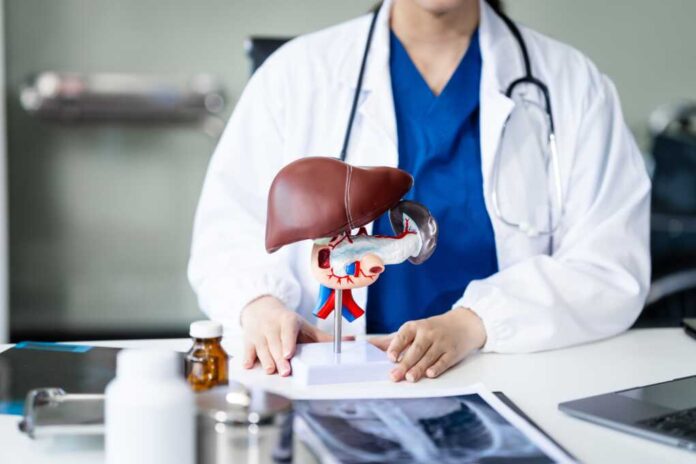
A landmark study reveals both oral and injectable naltrexone are equally effective for reducing alcohol consumption in hospitalized patients with alcohol use disorder, potentially transforming treatment approaches for this growing health concern.
At a Glance
- Both oral and extended-release injectable naltrexone demonstrate similar effectiveness in reducing alcohol consumption among hospitalized patients
- Injectable forms may help overcome adherence challenges associated with daily oral medication
- Despite proven effectiveness, medications for alcohol use disorder remain significantly underutilized
- Pharmacologic interventions are generally safe for patients with liver disease and recommended for moderate to severe alcohol use disorder
- Hepatologists are encouraged to take a leading role in treating alcohol use disorder and educating colleagues
Rising Prevalence of Alcohol-Related Liver Disease
Alcohol-related liver disease (ALD) is increasing globally, with a substantial portion of cirrhosis cases attributed to alcohol consumption. Despite this concerning trend, few gastroenterology and hepatology providers prescribe medications to help patients reduce alcohol consumption, creating a significant treatment gap. Pharmacologic interventions have proven effective for moderate to severe alcohol use disorder (AUD) and are generally safe for patients with liver disease, yet their prescription rates remain disappointingly low among patients with alcohol-related conditions.
Many primary care physicians and psychiatrists express hesitation to prescribe these medications for patients with cirrhosis or post-transplant due to concerns about hepatic metabolism and adverse reactions. This reluctance persists despite evidence supporting their safety and efficacy. Ideally, patients would be co-managed with addiction medicine providers, but such specialists are not always available, further highlighting the need for hepatologists to take a more active role in treating AUD.
Daily oral and monthly injectable naltrexone given to hospitalized patients with alcohol use disorder did not differ in effectiveness for reducing heavy drinking days. https://t.co/M38Om7ALym
— JAMA Internal Medicine (@JAMAInternalMed) April 21, 2025
Comparing Naltrexone Delivery Methods
A significant study involving 54 hospitalized veterans with alcohol dependence examined the effectiveness of oral versus injectable naltrexone. Participants were randomized to receive either daily oral naltrexone or a single intramuscular naltrexone injection before discharge. The research revealed no significant differences between the groups in medication adherence, treatment engagement, or alcohol consumption levels. Importantly, both groups showed substantial reductions in alcohol consumption over time, suggesting that either form can be effective.
The injectable form offers a potential advantage by addressing adherence challenges associated with daily oral medication regimens. For patients who struggle with consistent medication use, the extended-release injectable naltrexone provides sustained therapeutic levels for approximately one month following administration. This approach could be particularly beneficial for patients transitioning from hospital to outpatient care, when medication adherence is often challenging and relapse risk is high.
— AmphiDose (Harm Reduction Community) (@amphidose) December 14, 2024
Treatment Options and Implementation
Several medications have demonstrated effectiveness for alcohol use disorder, with acamprosate, naltrexone, and baclofen having the most data supporting their safety and efficacy in liver disease patients. Gabapentin has shown effectiveness for treating mild alcohol withdrawal symptoms and reducing cravings. Topiramate can reduce heavy drinking days but requires careful monitoring in patients with liver disease. These options provide clinicians with multiple tools to address alcohol use disorder, allowing for personalized treatment approaches.
Hepatologists are encouraged to take a leading role in prescribing medications for AUD, using tools like the Alcohol Use Disorders Identification Test (AUDIT) and its shorter version, AUDIT-C, for diagnosis. Biomarkers such as urine ethyl glucuronide and serum phosphatidylethanol can help diagnose significant alcohol use and monitor treatment response. By implementing these tools and treatments, healthcare providers can better address the growing problem of alcohol-related liver disease and potentially prevent its progression to more severe conditions.
Special Considerations for Comorbid Conditions
Patients with psychotic illnesses like schizophrenia face increased vulnerability to developing alcohol use disorder. The effectiveness of naltrexone in treating AUD specifically in individuals with comorbid psychosis has not been well-documented, representing a significant research gap. Since these patients often face multiple challenges in treatment adherence and management, having both oral and injectable options available could provide valuable flexibility in treatment planning. This highlights the need for more targeted research on naltrexone’s efficacy across different patient populations.
The equal effectiveness of both naltrexone delivery methods offers promising implications for patients with diverse medical needs. For those with alcohol-related liver disease, the option to use either oral or injectable forms allows clinicians to customize treatment based on individual patient factors such as liver function, medication adherence history, and lifestyle considerations. This flexibility could lead to improved treatment outcomes and reduced alcohol-related harm across various patient populations.


















